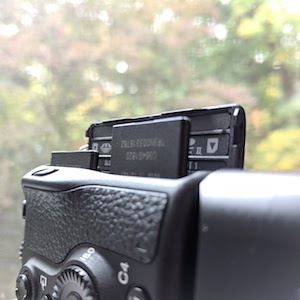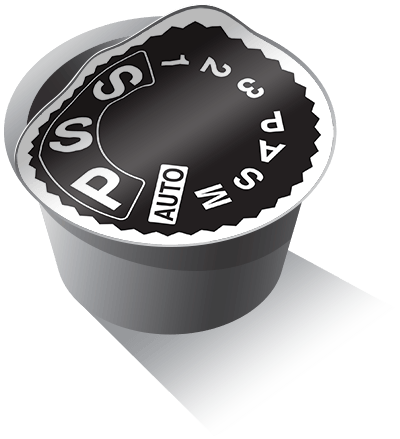What Do I Do With All of These Card Slots??

I recently moved to the Sony Alpha a7R III, and this is the first camera I’ve ever owned with two memory card slots. Naturally this gave rise to the question: what do I do with all of these card slots, anyway?
If you read or listen to almost any photography news at all, you’ve probably already gotten wind of the post-Photokina chatter regarding card slots. Canon and Nikon both released new mirrorless cameras and both of them have—hold onto your hats—only one card slot!
As a guy who has shot with a single card slot for decades and not paid much attention to it, this of course struck me as a bit of an overreaction, but I’m also not a working photographer so I didn’t realize that two slots was an expectation at this point in time.
Okay, so, I’m new at this, what should I do with two memory card slots? I’ll tell ya!
What are my options?
This will depend on your specific camera, but the a7R III has seven options for how you’d like these two slots to be used (assuming that they both have cards in them, of course).
Separate from these seven options, you can also choose which slot is the “primary” slot, which is mentioned in the options below.
- “Standard,” which means write to the slot you choose as the primary
- Simultaneously write photos to both slots (write video to the primary slot)
- Simultaneously write video to both slots (write photos to the primary slot)
- Simultaneously write both photos and video to both slots
- Write RAW to your primary slot, and JPEG to the other slot
- Write JPEG to your primary slot, and RAW to the other slot
- Write photos to your primary slot and videos to the other slot
Finally, you can choose whether the camera should “roll over” to the next slot when the first slot is full. That only really works when you’re using one of the settings above that records to one slot at a time.
This is a lot of options. So, what is the right move here?
There’s only one answer
For me, there’s only one possible answer, which is #2, simultaneously write photos to both slots. What this post is about, substantially, is why I think this is the only reasonable option to choose. So here we go.
First off, let me share that I’ve never had a memory card fail. Not like a hard failure in the middle of a trip or shoot. I’ve had cards misbehave at which point I stop trusting them, but I’ve never had a card fail to take writes, nor have I had a card fail to read.
The most likely reason for this is that I’m simply not very prolific. My entire Lightroom catalog is only about 40,000 photos, and that spans years of shoots and trips. An active, full-time photographer probably shoots 40,000 pictures a year, let alone over the ten or so years I’ve been shooting.
Nevertheless, cards can fail, so the way I look at it, it’s only a matter of time before a card fails on me. Do I want that to happen while I’m shooting a perfect sunset in a place I’ll not likely return to? No, of course not, I don’t want to lose that sunset!
By writing all photos to both slots, I will have two copies of every image, protecting me from the inevitable disaster of a card failure.
But what about the speed thing?
Oh, yeah. I forgot to mention that the a7R III’s two slots are not created equal. Slot 1 supports UHS-II, while slot 2 only supports UHS-I. What that means in practice is that the first slot is significantly faster than the second, if you are using cards that support UHS-II.
Before you take this opportunity to rip into Sony for making that dumb decision, consider that the top-of-the-line Canon EOS-1D X Mark II also has two slots where only one supports the new CFast interface (making slot 1 more than two times faster than slot 2), and this is a camera that currently costs $5,500 for the body alone.
So what happens if you write to both slots at once when one is faster than the other? Basically you’re limited to the second slot’s slower write speed (even with UHS-II cards in both slots). This makes sense when you note that UHS-I and UHS-II SD cards are actually different; UHS-II cards have a second row of pin pads, which won’t even be touched in the slower slot 2.
This might sound like a deal-breaker. And it might be, too, if you’re a sports shooter who needs to use high-speed continuous bursts to capture that perfect moment. That said, I don’t think it’s a deal-breaker for me.
The main reason is, I’m not a sports shooter (har har). I generally photograph things that aren’t moving at all, and I can spare a few seconds to wait for my buffer to clear if I do fill it. The buffer can hold something like 27 uncompressed RAW files, which is more than I’ll likely be shooting all at one time, even if I’m doing 9-photo brackets.
Furthermore, UHS-I cards are cheaper than UHS-II cards, so if I always need to have two in there at least I can save myself a little of that hard-earned dinero.
Okay, but, there are two directions
Indeed, we have only discussed getting images onto the cards and haven’t talked about getting images off of the cards. Surely having the fastest card possible would mean faster download times?
Yes, absolutely true. If you have a USB 3.0 card reader that supports UHS-II, which I don’t. When I first picked up this Sony camera, I used these SanDisk Extreme Plus cards I had laying around, and let me tell you, downloading these 40 megapixel images took ages.
I decided then to pick up the recommended, fastest Sony cards. The difference was such night and day; images downloaded easily five times faster, and the camera’s buffer cleared so rapidly. Since switching to writing to both slots at once, there is a small but noticeable slowdown in write speed, but as I mentioned, not something that has bothered me.
For my workflow, download is now the most trivial part of the process. It takes several times longer to convert to DNG and apply default profiles than it does to download the image files. Note that this is on a recent MacBook Pro with i7 processor and 16 GB of RAM; it’s just really intensive to convert these huge RAW files.
In conclusion, for me, a “standard” SD card reader is fast enough and it isn’t worth the extra money to go all UHS-II. I just don’t shoot enough volume for this to be a problem.
Please summarize
Sure, yes, this was a lot of words about memory cards. Ultimately, if the content you’re creating is fleeting—difficult, expensive, or impossible to reproduce—you should write to two cards. It is only a matter of time until a card fails.
If you’re shooting vlogs or snapshots, you may like to benefit from the faster speed of slot 1, in which case, buy a UHS-II card and go crazy, but know that the possibility of card failure looms over your head always. This never bothered me for the years and years that I shot with a camera with only one slot, but then, what could I do about it anyway?
My point is: you now have the technical ability to safeguard your images in the field. Why wouldn’t you do this?
For still photography, I will load up on the fastest UHS-I cards I can get and write to both slots simultaneously. If I shoot video, I will toss a UHS-II card in slot 1 and record directly to that, which will give me the best performance, and I’ll just hope I don’t have to shoot it again. I basically never shoot video, though, so I’m that weirdo.
Thanks for coming along for this technical ride. Got questions? I may not have answers, but hit me up in the comments below.
Also see:
- The Online Photographer, Are UHS-II Cards Worth It?
- Camera Memory Speed, Fastest SD cards for the Sony A9
 Single-Serving Photo
Single-Serving Photo
Comments